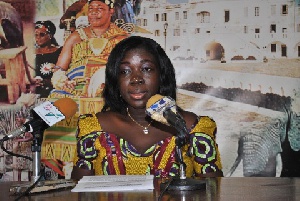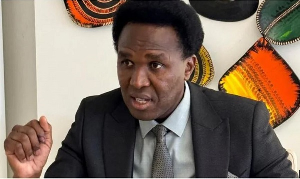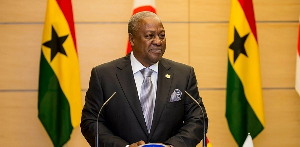Compensation for employees of the Ministry of Tourism, Culture and Creative Arts constitute 68.4 percent of its 2016 budget allocation, leaving little for other tourism-related programmes.
Out of the ministry’s total budget allocation of GH¢39million approved by Parliament, compensation for employees constitutes 68.4 percent; goods and services 5.5 percent; and internally generated funds (IGF) are expected to contribute 26 percent of the budget figure.
There was no allocation for capital expenditure -- for replacement of vital equipment and logistics for field trips, supervision and monitoring of programme and projects -- for a sector that is the fourth-highest foreign exchange earner.
The tourism sector maintains its position as the fourth (4th) highest foreign exchange earner for the country after Gold, Cocoa, and Oil and Gas. International tourist arrivals in 2014 was one million. Tourist arrivals for 2015 are estimated at 1.2 million. The sector also employs approximately 400,000 people.
Ghana recorded US$2.1billion in tourism receipts for 2014, with the country’s National Tourism Development Plan 2013-2027 projecting tourism receipts of US$4.3billion in 2027.
The Ghana Museum and Monuments Board lists Forts and Castles along the coast of Ghana from Beyin in the Western Region to Keta in the Volta Region, including those in ruins; and the ten remaining Asante Traditional Buildings in and around Kumasi in the Ashanti Region as UNESCO Listed World Heritage Properties in Ghana. Six other sites are also on the tentative list of UNESCO World Heritage Properties.
Notwithstanding this rich heritage, limited investment in Ghana’s tourism infrastructure has bridled the gains that ought to have been made in the tourism sector.
The UNWTO estimates that there are about 60 million tourists coming into Africa annually. The number of tourist arrivals is also projected to increase in the coming years, after containment of the Ebola epidemic that broke out in the West Africa sub-region last year.
This requires sustained spending to upgrade on-ground infrastructure, and the creation of an enabling environment to attract more private capital into the hospitality sector. Poor inter-country infrastructure on the African continent, for decades, has limited economic development and tourism.
Indeed, budgetary allocation to the tourism sector has been woefully inadequate over the years. This has restricted funds allocated to such important agencies under the ministry as the Museums and Monuments Boards, Ghana Tourism Authority, the Hotel and Catering and Tourism Training Centre, among others.
In 2015, out of a total allocation of GH¢33million approved for the Tourism Ministry, an amount of GH¢27million was released by the Finance Ministry -- leaving a variance of about GH¢6million. Compensation consumed 69 percent of the GH¢27million released for 2015.
A report submitted by the Joint Committee on Trade, Industry and Tourism and Youth, Sports and Culture aptly noted that: “The 2016 budget of GH¢39million for the ministry is not reflective of its huge mandate of developing a competitive Tourism, Culture and Creative Arts industry in the country for massive revenue generation and employment creation to support national development efforts”.
Given that there was no allocation for capital expenditure in 2016, the Committee recommended that the Ministry of Finance should allocate some funds from the Contingency Fund to cater for capital expenditure of the ministry for the year 2016.
The Committee also recommended a realignment of budgetary allocation that corresponds to the additional roles and responsibilities the Ministry of Tourism, Culture and Creative Art has assumed by absorbing other agencies and subvented organisations.
Click to view details



Business News of Monday, 11 January 2016
Source: B&FT
Salaries guzzle tourism budget
Entertainment
















